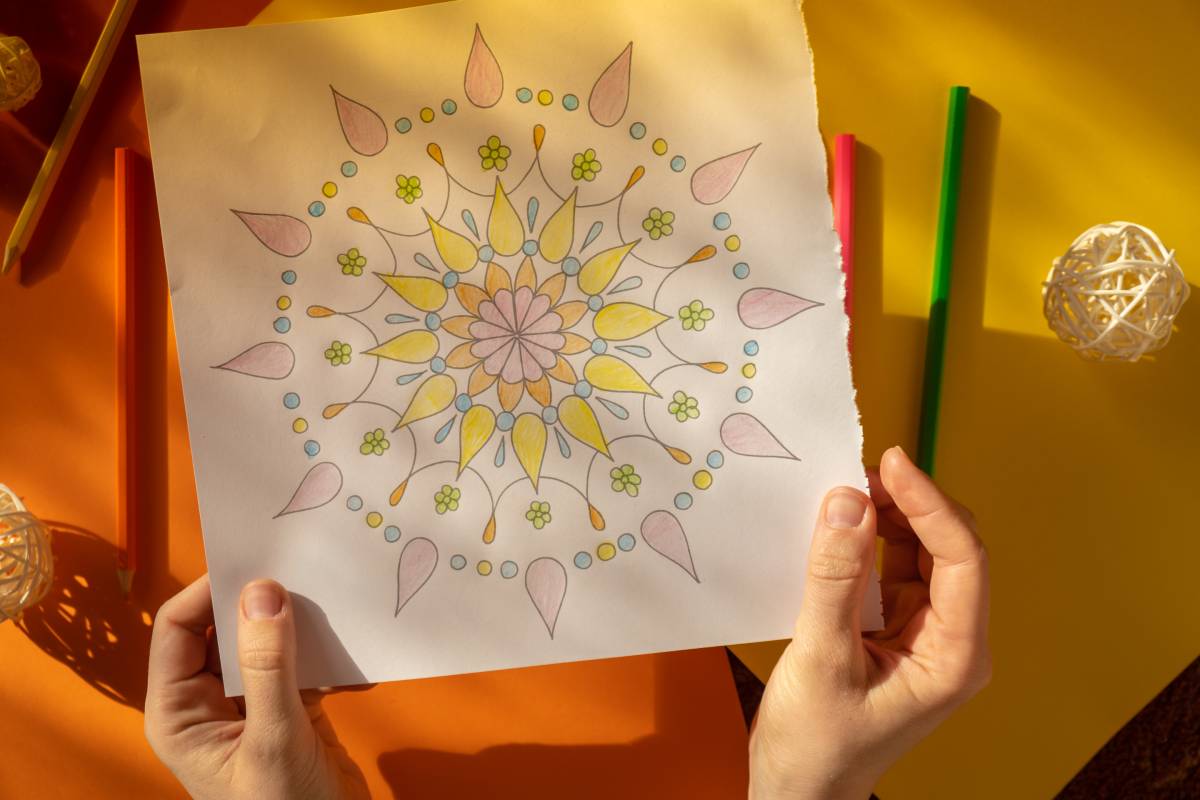Mandalas have been used for centuries in art, spirituality, and healing. But beyond their beautiful, intricate designs, mandalas hold deep meaning in psychology and mental health.
These circular patterns are more than just artwork; they offer a way to explore the inner mind, express emotions, and promote balance and healing.
In this article, we’ll explore what mandalas mean in psychology, why they are powerful tools for mental health, and how their unique healing properties can help improve well-being.
What Is a Mandala in Psychology?

The word mandala comes from an ancient language called Sanskrit and means “circle.” Mandalas usually have a round shape filled with patterns that spread out evenly from the center. These beautiful designs are seen in many cultures, especially in religions like Buddhism and Hinduism.
In psychology, mandalas are more than just pretty pictures. They show a person’s inner world their thoughts, feelings, and mind coming together. The famous psychologist Carl Jung noticed that people often draw mandalas when they feel lost, confused, or want to understand themselves better. For Jung, the mandala symbolized the “self,” meaning all parts of a person’s mind in balance.
Why Are Mandalas Used for Mental Health?
Mandalas are widely used by therapists and counselors because they help people relax, focus, and express their emotions without needing words. Here’s why mandalas are valuable in mental health care:
Helping People Relax and Focus
Creating or coloring mandalas is calming. The repeated, symmetrical patterns soothe the mind and stop racing thoughts. Focusing on a mandala helps people stay mindful and fully present.
Mindfulness lowers stress, reduces anxiety, and brings peace. Many feel refreshed and calm after spending a few minutes with mandalas.
Expressing Feelings Without Words
Sometimes it’s hard to talk about feelings, especially painful or confusing ones. Mandalas let people express emotions through colors and shapes instead of words. Drawing or coloring can reveal hidden feelings. This process is healing because it helps people understand and release difficult emotions.
Bringing Inner Balance
Psychologists believe mandalas organize the mind. Creating mandalas helps balance thoughts and emotions, reducing confusion and restoring wholeness. Therapists use mandalas with clients facing inner conflicts. The mandala helps bring peace by creating harmony in the mind.
Reducing Stress and Anxiety
Working on mandalas is relaxing. It slows down the heartbeat and lowers the levels of stress hormones in the body. For people dealing with anxiety or tough life situations, mandalas provide a safe space to calm the mind. Many hospitals and therapy centers include mandala activities as part of their relaxation and healing programs.
Improving Attention and Concentration
Creating a mandala requires focus and attention to detail. This practice can help improve concentration and mental clarity, especially for people recovering from trauma or those with difficulty focusing.

What Are the Healing Properties of Mandalas?
Mandalas have unique healing powers, both because of their shape and the creative process of making them. Here are some of the ways mandalas help heal the mind and emotions:
Creating a Sense of Wholeness
The circle shape of a mandala represents unity, balance, and completeness. Using mandalas can help people feel whole again, especially if they have felt broken or disconnected inside. Mandalas remind us that every part of ourselves belongs together and deserves care and attention.
Calming Anxiety and Stress
The simple act of drawing or coloring mandalas reduces anxiety. This focused activity slows down quick, worrying thoughts and brings calm. The peaceful feeling often lasts long after finishing the mandala. Many people with anxiety disorders use mandalas regularly to find moments of quiet and peace.
Releasing Emotions
Making mandalas offers a safe way to open up and release difficult feelings. It’s like unlocking a door to emotions that may have been trapped inside.
This release is essential for emotional healing. After working with mandalas, many people report feeling lighter, freer, and more hopeful about the future.
Supporting Spiritual Growth
For some, mandalas are more than just psychological tools they connect us to something greater than ourselves. Mandalas can inspire feelings of spirituality and connection to a higher power or universal energy. This spiritual aspect offers many people comfort, strength, and meaning during hard times.
Helping Recovery and Building Strength
In hospitals and therapy, mandalas are used to support healing after illness or trauma. The process of making a mandala builds patience and gives people a sense of progress.
Completing a mandala can give confidence, helping people face life’s challenges with strength. And when life feels overwhelming, and people leave you feeling unsupported or drained, a quiet moment with a mandala can bring back a sense of peace, control, and emotional safety.
How Can You Use Mandalas for Healing?
If you want to try mandalas for your mental health, here are simple ways to start:
- Create Your Own Mandala: Draw or color a mandala using patterns from books or by designing your own. You don’t need to be an artist just enjoy the process.
- Look at Mandala Art: Simply viewing mandalas can calm your mind and bring focus.
- Use Mandalas with Meditation: Concentrate on a mandala during meditation to deepen relaxation.
- Join a Group Workshop: Making mandalas with others can provide support and fun.
- Combine with Journaling: After making a mandala, write about your feelings and thoughts during the process to deepen understanding.
Final Thoughts
Mandalas are powerful tools that connect art, psychology, and healing. They help us understand ourselves, express emotions, reduce stress, and find balance.
Whether you create mandalas or simply observe them, mandalas guide you toward inner peace and mental clarity. The wisdom of Carl Jung and many ancient cultures shows us that mandalas represent unity, transformation, and personal growth. By using mandalas in your life, you can discover a path to calm, self-discovery, and healing.










